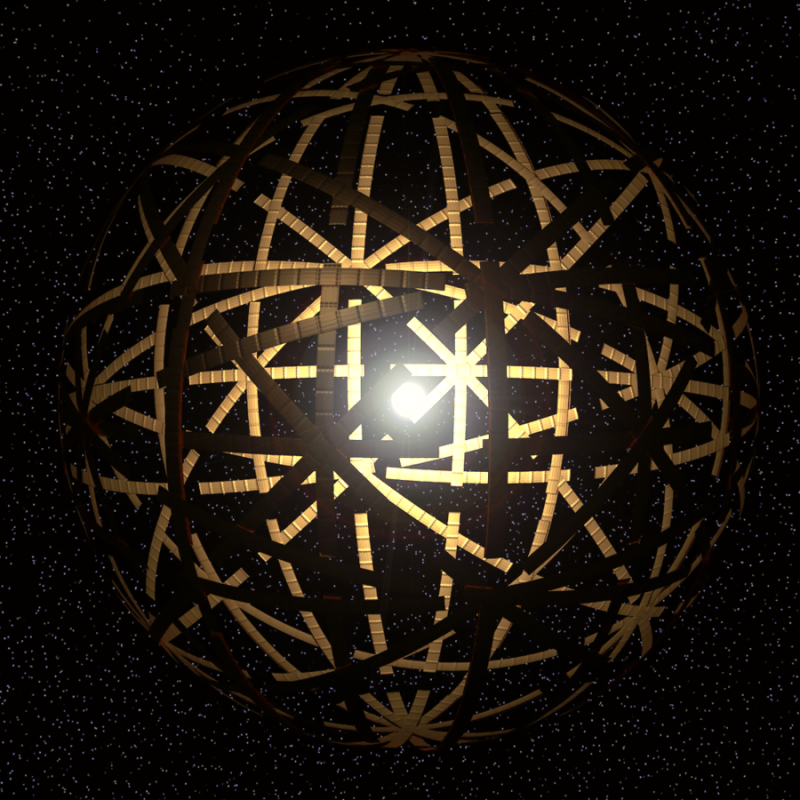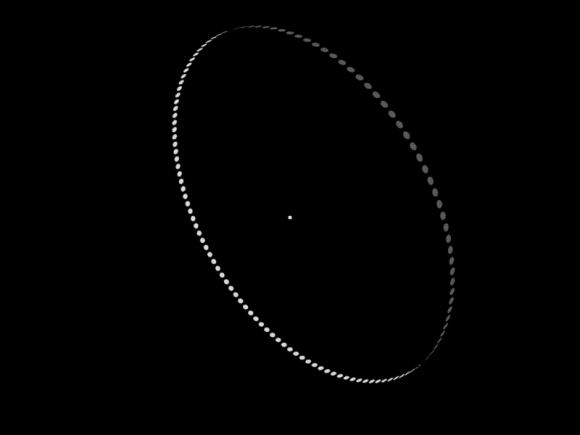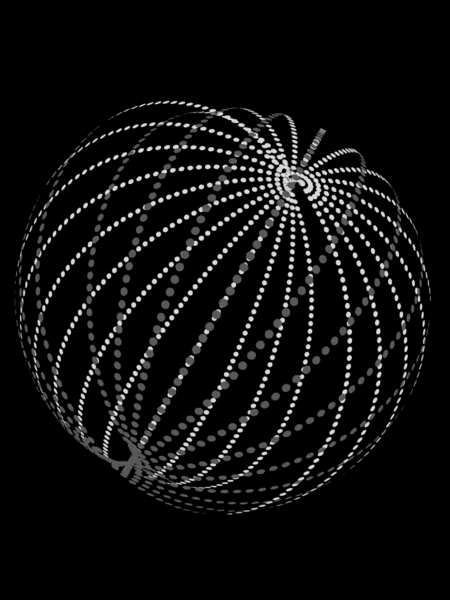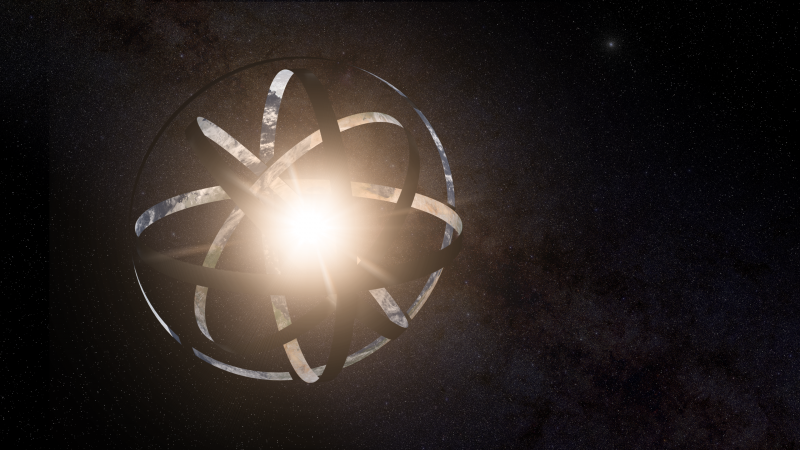
Earth’s biggest construction project
What if humans could harness all the sun’s energy? What if extraterrestrial civilizations have already learned to harvest the energy of stars? In 1960, physicist and astronomer Freeman J. Dyson proposed the use of orbiting solar collectors to accomplish this mind-boggling feat. He first explored it as a thought experiment. Nowadays, we call these megastructures by the name Dyson spheres. And some astronomers want to search for them.
The idea of a Dyson sphere started with Dyson’s two-page paper in the journal Science in 1960. The title was Search for Artificial Stellar Sources of Infrared Radiation. Dyson imagined a solar-system-sized, power-collection structure as a technology that would be inevitable for advanced civilizations in the universe. He proposed that searching for evidence of the existence of such structures might lead to the discovery of intelligent life in the galaxy.

The mystery of Tabby’s Star
In recent years, astronomers explored a true-to-life possibility of a Dyson sphere. It involved a bizarre star labeled as KIC 8462852 and more popularly called Tabby’s Star. The nomenclature comes from its discoverer, Tabetha Boyajian. This star’s light is strange, with abrupt dimmings. Astronomers originally thought the star’s light might indicate a Dyson sphere. New ideas about Tabby’s Star are slightly (but not entirely) less fanciful, including the possibility of a melting exomoon. But the astronomers’ talk about a Dyson sphere was fascinating while it lasted.
And, in 2018, more Dyson sphere discussion emerged. For example, there’s been a proposal to use the Gaia mission to search for Dyson spheres.
So, Dyson spheres have remained strictly in the realm of science fiction or science possibility during the 20th century. But the idea of them now seems real enough to astronomers that some are scrutinizing particular stars, looking for signs of them.
What is a Dyson sphere?
Originally, some envisioned a Dyson sphere as an artificial hollow sphere of matter around a star, and Dyson did originally use the word shell. But Dyson didn’t picture the energy collectors in a solid shell. In an exchange of letters in Science with other scientists following his 1960 article, Dyson wrote:
A solid shell or ring surrounding a star is mechanically impossible. The form of ‘biosphere’ which I envisaged consists of a loose collection or swarm of objects traveling on independent orbits around the star.


A sphere the size of Earth’s orbit
A Dyson sphere might be, say, the size of Earth’s orbit around the sun. We orbit at a distance of 93 million miles (about 150 million km). The website SentientDevelopments describes the Dyson sphere this way:
It would consist of a shell of solar collectors (or habitats) around the star. With this model, all (or at least a significant amount) of the energy would hit a receiving surface where it can be used. [Dyson] speculated that such structures would be the logical consequence of the long-term survival and escalating energy needs of a technological civilization.
And, of course, science fiction writers have had a field day writing about Dyson spheres. Dyson himself admitted he borrowed from science fiction. Afterward, he created his technical exploration of the idea of a megastructure gathering energy from its star. Olaf Stapledon first mentioned this idea in his 1937 science fiction novel Star Maker. Dyson apparently read Stapledon’s book and used it as inspiration.
Have extraterrestrials built Dyson spheres?
What might astronomers look for, in the search for evidence of Dyson spheres? Even before the discovery of Tabby’s Star, astronomers have felt frustrated by decades of seeking radio signals from intelligent civilizations beyond Earth and not finding any. And so, a few astronomers in 2013 were contemplating a new search strategy. Consider that if a system of solar power collectors – a megastructure – were put in place around a star, the star’s light would be altered. The solar collectors would absorb and reradiate energy from the star. Astronomers have talked about seeking that reradiated energy.

Good video on Dyson sphere
By the way, no one has ever said that building a Dyson sphere would be easy. The video below made me laugh out loud a couple of times as the dry voice of the British host said things like:
Of course, we’d have to ravage an entire planet to get the raw materials.
and
Mercury would be a good candidate.
It’s a fun video, and thought-provoking, if you have the time.
Bottom line: A Dyson sphere is a megastructure that could theoretically harvest all the energy of a star and supply an advanced alien civilization.
Via sentientdevelopments: How to build a Dyson sphere in five (relatively) easy steps
The post A Dyson sphere harvests the energy of stars first appeared on EarthSky.
0 Commentaires